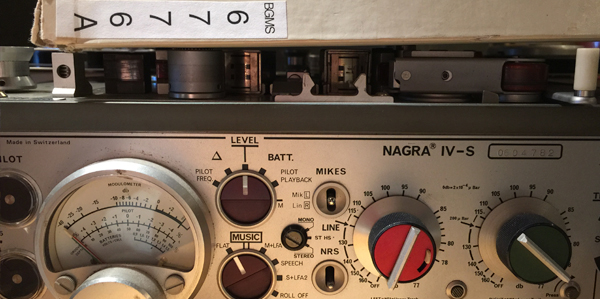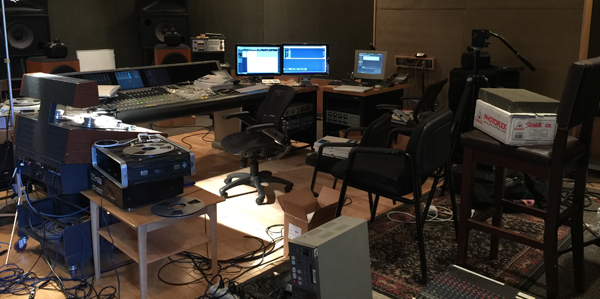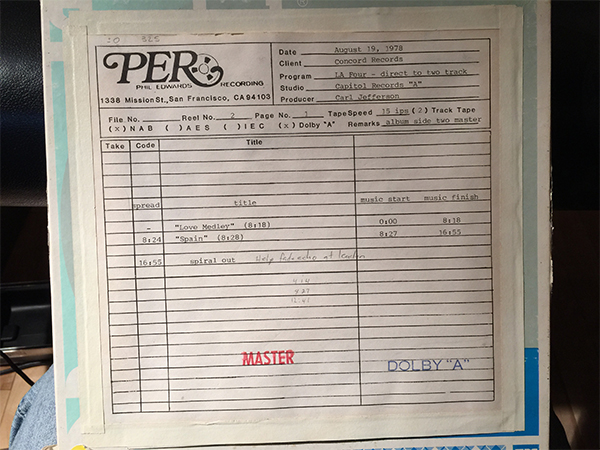Adding Dolby “A” Noise Reduction To The Mix
I wrapped up the Christian Jacob “Beautiful Jazz” transfers last night about 10 pm. It was a very long day. As I drove out of my parking lot, I made the choice to use the freeway and Pacific Coast Highway (California’s very famous coast road) to slide up the coast and get home quickly. Usually, I take the back way because it’s usually faster. Driving along the coast is not a great idea during a weekend day…especially when it’s over 85 degrees (and hotter in the valleys). I should have followed my usual path because just as I arrived at the McClure Tunnel to begin the PCH stretch, traffic came to an immediate halt. There would be no getting home quickly. I sat for almost 45 minutes while emergency vehicles inched their way through the tightly packed cars and disappeared at the other end of the tunnel.
I crept along for about a half mile before easing my way past a few twisted up cars and a group of traumatized people sitting on the edge of the highway. The perfect ending to a very long day for them too.. And I knew that I had to get up early and do part 2 all day today. Only today’s transfer work required the use of the Dolby 363 machine capable of encoding and decoding both Dolby A and SR noise reduction. The LA4 “Just Friends” album was encoded with Dolby A and therefore, I needed to rent a Dolby A decoder as well as the Studer. Rodney at Tim Jordan Rentals had one, so it was “one stop” renting. Here was another machine that I hadn’t touched in over 20 years.
Analog tapes have limited dynamic range…at least as compared with CDs and high-resolution digital audio. A master, first generation tape can approach 60-72 dB of dynamic range but not a decibel more unless some sort of noise reduction scheme is used. Thanks to the late Ray Dolby that number can be improved…somewhat. I had to look up the user manual and happened to run into the specifications for Dolby A. Using the original professional scheme takes the dynamic range up to 75-85 dB (still short of a CD). But in reality, this particular method was only used on stereo masters not the multichannel 24 track 2″ machines. The fidelity of the source 24-track tape was the limiting factor in the overall fidelity of those early recordings. Sound familiar? The fidelity of the weakest link defines the fidelity of the entire project. At least with Dolby A, we didn’t lose any additional fidelity…unless you figure that the encoding scheme itself was non linear. And it is.
Figure 1 – I made a big mess of the studio.
So I’ve been splicing, rewinding, and threading analog tape for the entire weekend. But the most critical step of a successful transfer in an analog world is to maintain the same signal level throughout every step of the signal path. Master analog tapes should come with a set of test tones at the head of the reel. These tones (1 kHz, 10 kHz, and 100 Hz) are used to adjust the gain structure from the source…the tape…to the other machines in use. My first task today was to playback the tones on the LA4 master, setup the input and output levels of the Dolby 363, and finally, confirm the Studer was receiving the same levels across the entire spectrum. That took a while.
Figure 2 – The box from LA4 “Just Friends”
In the world of PCM digital audio, there isn’t so much fussing with input and output levels. If you get the stream of bits and clock successfully from the source to the destination system, you don’t have to worry about gain structure. And you don’t have to worry about noise getting into the digital cables and DACs because despite the claims of a number of individuals, digital bits are actually digital bits.
Glad this is project is behind me.




This maybe a silly question but, in my formative years in this hobby, one of my pride and joy audio components was a TEAC cassette deck (919x I believe) that had both Dolby B, C, HX PRO and DBX noise reduction systems. The thing made great recordings (and mixed tapes!) off CDs. The best results I got were using Metal tape and DBX when recording projects. I felt like I could get more dynamic range on the tape than either Dolby B or C could muster. Did DBX achieve similar sorts of results when recording on analog tape in the pro studio world?
DBX was another noise reduction method that used a single 2:1 companding process…it was very effective but not linear.
OMG Mark!
Between the rental costs, tape costs and the late night hours. I hope this turns out to be a profitable project for you.
Now I’ve gained some appreciation of why the retail tape market charges what they do.
Most tape companies use multiple decks and create third generation copies. My process created 2nd gen copies directly from the master AND I only had one deck.
hi Mark,
that’s a wonderful master tape you have there. have you ever accidentally or otherwise listened to a dolby A tape raw, without decding? OMG. if ONLY dolby S had been developed WAY sooner.
I have…and did…the week.
Congratulations! Analog projects are never easy. Never were.
One point, Dolby A is actually one of the most linear noise reduction schemes ever invented. Unlike fully companded systems (dbx is one), Dolby A operates in a linear fashion above a certain threshold, -40 I seem to recall, and only gets into it’s non-linear range below that. Being a 4-band system also helps it hide its tracks. And, being fully complimentary once encode and decode are properly calibrated, it behaves as a linear system, in total.
All analog Dolby processes were similar in this way. Ray discovered that fully companded systems had too many side effects, and thus designed his to be only active a low levels. That’s why Dolby A, and its successor, Dolby SR, were the choice of higher -end studios.
BTW, my last multitrack analog project used a Studer A80 24 track with 24 tracks of Dolby A provided by a 24 card XP mainframe and a smaller Dolby A card…don’t recall the number, about half the size of the Cat. 22. But multitrack Dolby A, the stereo mixdown was to PCM-1620 (16 bit linear digits).
And in the trivia dept.: There was a dbx card that fit the Dolby 360 series mainframes. The Dolby A card was the Cat. 22, the dbx card was a K9 22. Some engineers did have a sense of humor.
Thanks for the details…I remember the K9 22 as well. LOL
I am glad you are responding to market demand, but it still boggles my mind people want to play back reel to reel tapes to listen to music.
This article — http://www.soundonsound.com/sos/feb10/articles/analoguewarmth.htm seems to point to other options — “Crane Song’s Phoenix Tape Emulation, McDSP’s Analog Channel, PSP’s Vintage Warmer, Voxengo’s Tapebus and Nomad Factory’s E‑tube Tape Warmer.” ABX testing needed, etc.
on the other hand old nostalgic functional hardware is very cool, especially machines with moving parts.
I did this as a favor to a few readers that really want analog tapes. It’s not my thing…although the Studer did sound amazing…but I can’t begrudge those who like their decks and analog tapes. As long as they don’t try to claim that analog tape eclipses well done high-resolution digital. The first few transfers, doing some razor blade cutting, and spooling leader tape onto the heads and tails of the copies was a throw back to my career many years ago. I honestly wonder how many audio schools still teach their students how to do analog editing. I know my doesn’t…we don’t have a functioning analog tape deck. Sad.